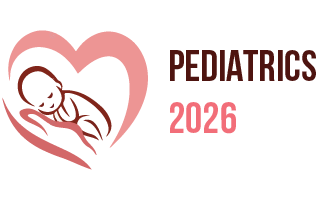4th International Conference on
Pediatrics & Neonatology
August 13-14, 2026 | Barcelona, Spain

Address: Avinguda Del Maresme 78 Ronda De Dalt Exit 15, 08940 Comellà de Llobregat, Barcelona, Spain
Pediatrics 2026

Safa Sunaulo Nepal, Nepal
Abstract:
Low Birth Weight (LBW), birth weight of less than 2500 grams regardless of gestational age, is a significant public health issue globally. The prevalence rates in Nepal vary between 15% and 29%. This study aims to identify risk factors of LBW in Western Nepal, a region that has not been extensively investigated. A hospital-based unmatched case-control study was conducted at Bheri Hospital in Western Nepal from July 2020 to June 2021. Data were collected from 300 mothers delivering live singleton babies with 150 of them having newborns weighing less than 2,500 grams (cases) and 150 of them weighing 2,500-4,000 grams (controls). Data were collected through structured face-to-face interviews and hospital record reviews. Mothers with a monthly income above 15,000 Nepali rupees had lower odds of having LBW infants (aOR: 0.2, 95% CI: 0.1-0.3). Lack of support from husbands and mothers-in-law during pregnancy significantly increased the odds of LBW, with nearly four times higher odds for lack of husbands' support (aOR: 3.9, 95% CI: 1.2-12.3) and 9.5 times higher odds for lack of mothers-in-law's support (aOR: 9.5, 95% CI: 4.6-19.5). Maternal smoking during pregnancy also increased the odds of LBW significantly (aOR: 8.9, 95% CI: 1.9-40.2). Intended pregnancy was protective, reducing the odds of LBW (aOR: 0.2, 95% CI: 0.1-0.3). Women with a history of delivering LBW babies within the past three years had a higher risk of recurrence (aOR: 12.2, 95% CI: 1.5-98.7), and those with a recent abortion exhibited increased odds of LBW (aOR: 5.6, 95% CI: 1.8-17.5). Attending four or more ANC visits and receiving nutritional counseling significantly lowered the odds of LBW (aOR: 0.2, 95% CI: 0.07-0.7 and aOR: 0.2, 95% CI: 0.1-0.4, respectively). Weight gain of 7 kg or more during pregnancy also reduced LBW risk (aOR: 0.1, 95% CI: 0.01-0.14), whereas preterm birth increased the odds of LBW (aOR: 9.5, 95% CI: 4.5-20.2). Interventions to reduce LBW should address these modifiable risk factors, emphasizing family support, ANC visits, nutritional counseling, and behavioral change communication.
Biography:
Ranjan Dhungana, MPH in Public Health and MPhil in Demography, is a dedicated neonatal health specialist from Nepal. Focused on the Helping Babies Breathe (HBB) program, he has contributed significantly to maternal and neonatal care, publishing over 10 articles in peer-reviewed journals, and conducting groundbreaking research in Nepal.
